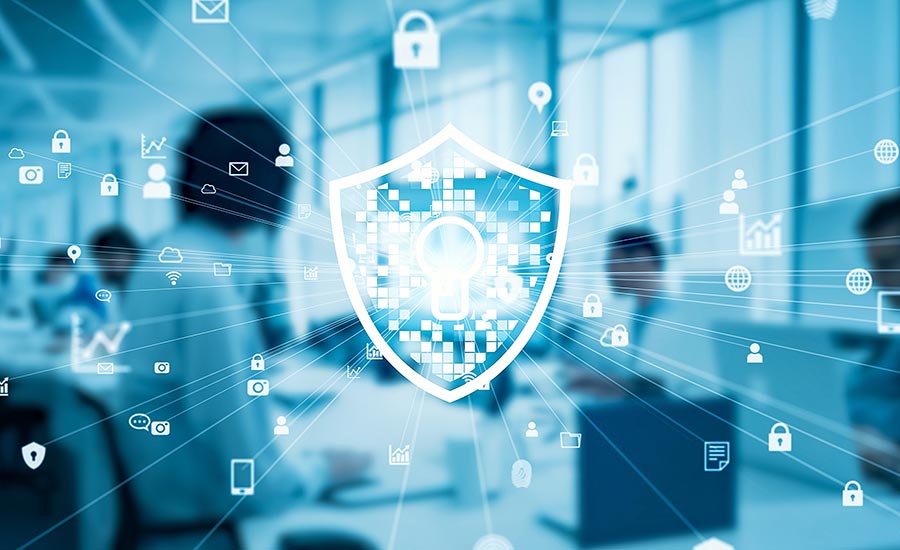
Cyber Resilience 2024
At its core, cyber resilience refers to an organization’s ability to continuously deliver its intended outcomes despite adverse cyber events. It’s not simply defending against attacks; it involves preparing for, responding to, and recovering from them in a way that minimizes impact and maintains business continuity. In 2024, the concept of cyber resilience will transcend technical jargon to become a strategic imperative for the C-suite. This shift is driven by the increasing sophistication of cyber threats, the interconnected nature of digital ecosystems, and the critical importance of data integrity and security in all business operations. In this context, understanding and implementing robust cyber resilience strategies is essential for safeguarding an organization’s digital assets and reputation in a volatile cyber landscape.
2023 will likely go down as the “Year of AI Hype.” While speculation about what AI will and won’t do is still at a fever pitch, the quiet rise of sophisticated AI tools will power a new wave of threat actors adopting AI to expand their toolkit. AI-based detections are prevalent in solutions on the market today, but advanced cyber resilience requires AI across all four pillars of cyber resilience. In 2023, ransomware group, Lockbit (whom Analyst1 researches extensively), increased their victim tally by 20% year-over-year.
Cyber attacks increased in 2023 and one particularly alarming trend is the immediate exploitation of vulnerabilities upon their publication. About 25% of high-risk vulnerabilities were targeted for exploitation on the same day they were disclosed, with 75% exploited within three weeks – setting up a critical window for organizations to address these threats. Diversification will also close out the year with 94% of malware is now delivered via email, reflecting a significant shift in the methods used by cyber attackers. Additionally, the frequency of hacker attacks is staggering, with an average of 26,000 attacks occurring each day, or about every three seconds. This relentless pace of attacks highlights the constant pressure on cybersecurity programs.
Cyber resilience has evolved from being a technical issue once confined to IT departments to a critical strategic concern that necessitates leadership and direction from the highest levels of an organization. There are four key components of a modern cyber resilience program:
- C-suite involvement is key to setting a tone of security awareness, ensuring compliance, and embedding cybersecurity into a company’s culture. This approach demands that leaders not only advocate for robust security measures but also lead by example, promoting a culture where every employee understands their role in safeguarding the organization’s digital assets.
- The integration of cyber resilience into the overall business continuity plans will be a focus for the C-suite in the coming year. This integration ensures that in the event of a cyber incident, not only are the IT aspects addressed, but the wider operational impacts are also considered, allowing for a coordinated response that maintains business operations.
- To ensure minimal disruption, continuous monitoring of the organization’s networks and systems to detect and respond to threats in real-time is at the center of cyber resilience in 2024.
- Regular training and awareness programs for all employees are vital as human error often constitutes a significant vulnerability in cybersecurity. These components together create a comprehensive strategy that enhances an organization’s ability to prevent, detect, respond to, and recover from cyber incidents.

These expectations often leave executives grappling with challenges like budget constraints and technology overwhelm. Multiple tools are often in place, while analysts rely on spreadsheets to aggregate information in a useful way. Overcoming these obstacles requires a strategic balance between investing in technologies and ensuring continuous education and training for their workforce. By focusing on the four pillars, C-suite leaders can develop a comprehensive approach to cyber resilience, ensuring their organizations are not only prepared for current threats but also adaptable to future challenges.
Deloitte’s Cybersecurity Threat Trends Report further underscores the importance of a collaborative approach to cybersecurity. This approach, often led by C-suite executives, is essential for equipping organizations to provide indications and warnings of evolving tactics and efficiently reviewing defensive posture measures, such as endpoint detection, alerting rules, and security tools. Threat intelligence solutions will be expected to do more than simply aggregate intelligence. Advanced solutions will include reliable enrichment and playbook-less automation and enforcement.
In 2024, the importance of cyber resilience for C-suite executives cannot be overstated. Leaders are encouraged to prioritize a threat intelligence solution that ensures they are well-equipped to identify, understand, and mitigate potential threats. This approach is not just a defensive measure; it’s a strategic imperative that can provide a competitive edge as cyber threats continue to evolve. Let this be a call to action for C-suite executives in 2024: Don’t invest in platforms, invest in solutions that make your people better and more effective at their jobs.
- Deloitte Cybersecurity Threat Trends Report 2023
- 2023 Threat Landscape Year in Review: If Everything Is Critical, Nothing Is
- Predictions 2024 from cybersecurity vendors, Part 1
- Artificial Intelligence and USBs Drive 8% Rise in Cyber-Attacks
- The Use of Artificial Intelligence in Cyber Attacks and Cyber Defense


